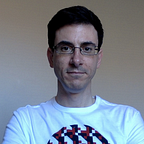On Radical Hope by Jonathan Lear — Part 2
In part one, I noted that Lear draws on Heidegger’s Being and Time to make sense of our “ontological vulnerability” to a breakdown in meaning. As creatures whose existence fundamentally consists in making sense of things, we are to a great extent dependent upon the meaningful possibilities which are illuminated through our cultural and social practices. When this cultural foundation collapses, there is a sense in which the intelligibility of our world also collapses. One of the main ideas Lear explores is that even prior to such a collapse, there is a way in which this vulnerability can make itself felt.
In Being and Time, Heidegger discusses the individual’s experience of anxiety (Angst in German) as revealing something of great importance about human existence. Anxiety draws us out of what Heidegger calls our “crowd-self”, that is, the typical roles, worries and tasks with which we preoccupy ourselves in our everyday lives. Anxiety is the feeling or mood that strikes us when our daily preoccupations begin to lose their grip on us; when we begin to wonder about the point of it all and whether there isn’t a deeper meaning to our lives. Through this experience, the world itself becomes unfamiliar or uncanny. Consider, for example, a case in which a deadline that someone has been working towards all of a sudden loses its urgency for that person. Whereas before they had been wrapped up in the need to meet the deadline, and so focused on bringing together all those elements which are needed to make things happen, at that very moment the deadline no longer appears to them as something which has the same organizing and motivating significance for them. The experience is uncanny because a situation which had been familiar now becomes very unfamiliar, even though the person can still understand everything that is going on. What moments like this can reveal is that the intelligibility of our world is very much dependent on us, on our active taking up of possibilities and combining them together in the tasks and projects we choose to pursue, rather than as a meaningful whole which we can simply take for granted. The anxiety arises in distancing ourselves from the possibilities with which we are normally fully engaged, and in the accompanying threat of a breakdown of intelligibility.
In a footnote to chapter two, Lear describes his book as a meditation on Heidegger’s idea of “being-towards-death”. This is more accurately put as “being on the edge of death”, because Heidegger explicitly associates it with the sense of anxiety described above, which can strike us at any moment and isn’t specifically tied to some point in the future when we will cease to exist. It is meant to highlight how our existence is always, at every moment, engaged in an existential struggle to ward off the utter meaninglessness that lies on the other side of existence, even if we rarely relate to our own existence in these terms. It is in the mood of anxiety, by coming face to face with the world in its uncanniness, that this existential struggle is revealed to each individual.
While Heidegger’s focus is on the individual’s experience of anxiety, Lear is interested in how this kind of experience might affect an entire community which is facing the prospect of cultural devastation. He invokes the idea of communal anxiety, explicitly in relation to the accounts of anxiety developed by both Heidegger and Kierkegaard (whom I’ll discuss in a future post). Lear’s argument in chapters two and three is mostly concerned with how such an anxiety, as felt by the Crow, may have been transformed through radical hope into the imaginative resources needed to survive the collapse of their way of life. Having considered some of the background to Lear’s argument, I will consider the argument itself in more detail in part three.
